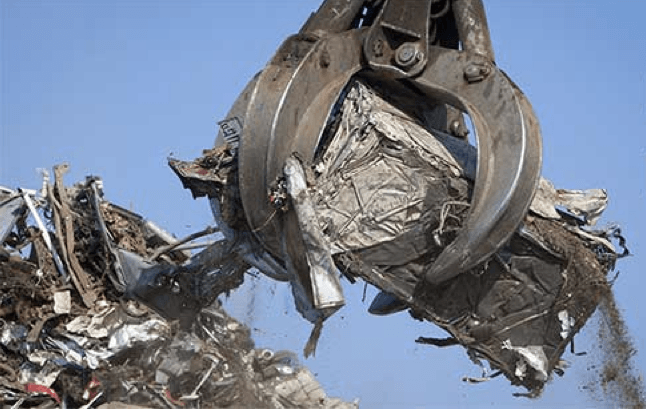
The single largest rural economic development project in Oklahoma history is under way, in the form of a new "uniquely clean" steel mill that just closed on construction funding. That brings a welcome spot of green news to a state haunted by the impacts of its oil and gas sector. In recent years Oklahoma has struggled to corral swarms of earthquakes attributed to a willy-nilly approach to oil-and-gas wastewaster disposal.
The phrase "uniquely clean" isn't often applied to steelmaking, but the new mill illustrates how a legacy manufacturing sector can adapt to evolving environmental standards.
A "uniquely clean and green" steel mill
The new mill will be located in the rural southern Oklahoma town of Durant, the community heart of the Choctaw Nation. It is a recycling plant that will take in pre- and post-consumer steel scrap, and spit out 380,000 tons of rebar once it's up and running in 2017.
The company behind the new steel mill is the Commercial Metals Co., and that's where the green angle comes in. CMC is a member of the Energy Department's Better Plants Program, which recognizes manufacturers that save energy. Better Plants member companies -- the number is currently almost 160 -- set a goal to reduce their energy intensity by 25 percent or more within 10 years, aided with technical assistance from the Energy Department along with the benefit of sharing best practices with each other.
So far, CMC has reduced its energy intensity by 2.02 percent.
A large part of that savings is due to the introduction of a new low-intensity steelmaking process, first introduced into the U.S. by CMC in Arizona. Here's a description of the company's Arizona plant:
Developed and constructed by CMC, it is the first technology of this type to be successfully operated in the United States. This innovative continuous-continuous process, melts, casts, and rolls steel from a single uninterrupted strand, producing higher yields and lower energy costs than the traditional minimill process.
Like its Arizona cousin, the new CMC steel mill in Oklahoma is expected to reduce carbon dioxide emissions by 58 percent or more compared to conventional steelmaking.
To reduce energy consumption, the steel mill will capture gases from the steelmaking process and recycle them for pre-heating the scrap.
The plant also minimizes discharge by recycling water, and it deploys a high-tech air filtering system, among other improvements.
This is just a wild guess, but it's possible that emissions could be further reduced some time in the sparkling green future, when new systems for converting industrial gases to liquid fuel reach the commercial stage.
It takes a village to finance green steel
As the largest economic development project of its kind in Oklahoma, the new CMC steel mill is expected to make an enormous difference in the region. It is expected to support 300 jobs in a census tract that is currently struggling with 13.1 percent unemployment.
It was financed partly with $21 million from the National New Markets Fund, a community development fund that is designed to maximize the social impact of federal tax credits.
The fund is managed by Strategic Development Solutions. Founded by triple-bottom-line pioneer Deborah La Franchi, who is also president of the New Markets Fund, SDS has more than $1.5 billion in socially-responsible investment capital under its wings.
Other partners in the new steel mill are Rural Enterprises of Oklahoma, Inc., Midwest Renewable Capital and U.S. Bank.
In addition, U.S. Bancorp Community Development Corp. (USBCDC), a subsidiary of U.S. Bank, serves as tax credit investor.
About those earthquakes...
The new steel mill is also of interest because it marks a big step forward in Oklahoma's efforts to diversify its economy, which has been rooted in agriculture and extractive industries.
The diversification effort is timely, given the impact of oil-and-gas wastewater disposal in Oklahoma.
In recent years, the formerly seismically-challenged state has become the most active spot in the entire world, a status that researchers have linked to the practice of injecting wastewater from oil and gas operations deep underground.
Beginning last year, state officials began to clamp down on the injection wells, but the barn door may have closed too late.
Earlier this week, the local Fox affiliate OKCFox.com reported that the year-to-date number of earthquakes in Oklahoma has increased 23 percent compared to last year, with 825 compared to 671.
Most of the quakes have been very small -- too small to be felt on the surface -- but among them, several that stand out:
... 2016 has seen more large, damaging types of quakes, including a 5.1 magnitude quake, the state's third largest on record.In 2016, there have been nine quakes 4.0 or higher, compared to just four in 2015.
In the latest episode, earlier this week three earthquakes registering 3.0 hit the north and central parts of the state.
Image (screenshot) via Commercial Metals Company.

Tina writes frequently for TriplePundit and other websites, with a focus on military, government and corporate sustainability, clean tech research and emerging energy technologies. She is a former Deputy Director of Public Affairs of the New York City Department of Environmental Protection, and author of books and articles on recycling and other conservation themes.














